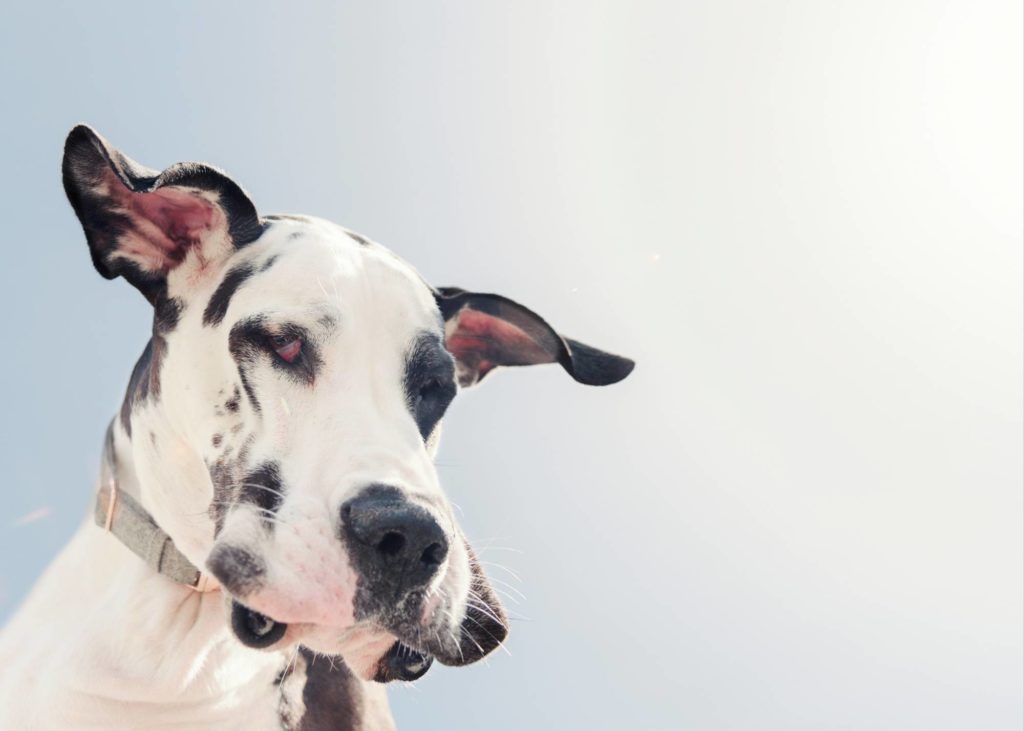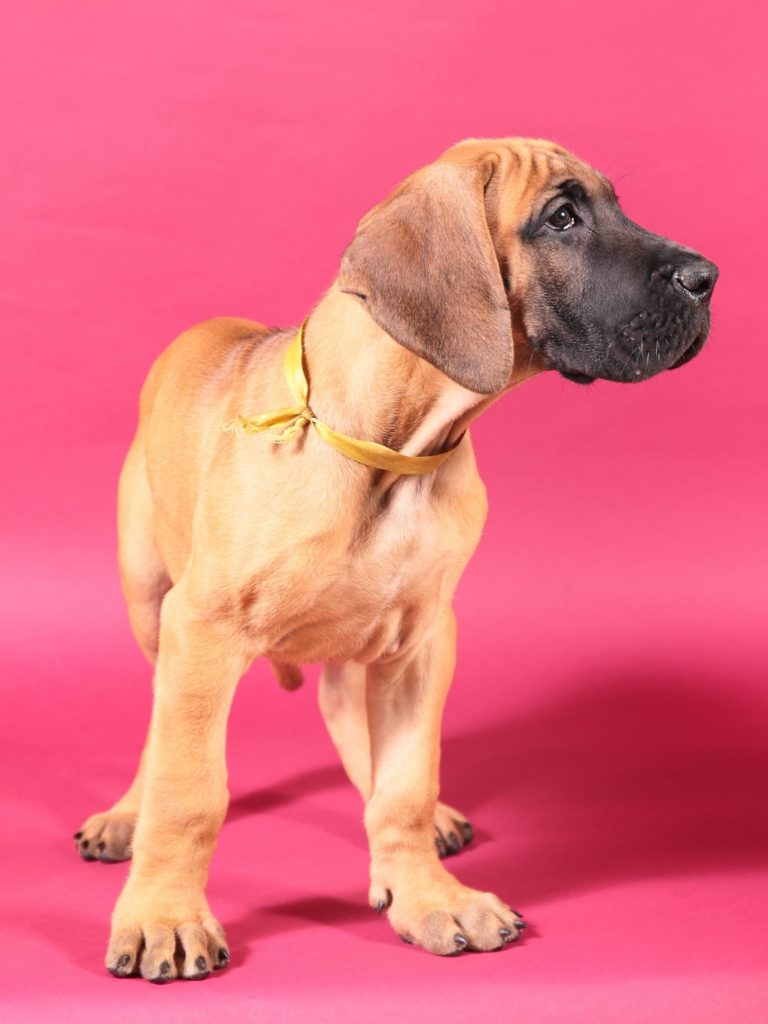Do you love BIG dogs? Today we’re talking about the American Great Dane. How are they different from other dogs?
We’re diving into that, as well as giving you information about Great Dane lifespan, health, and temperament, plus, how to find a Great Dane breeder!
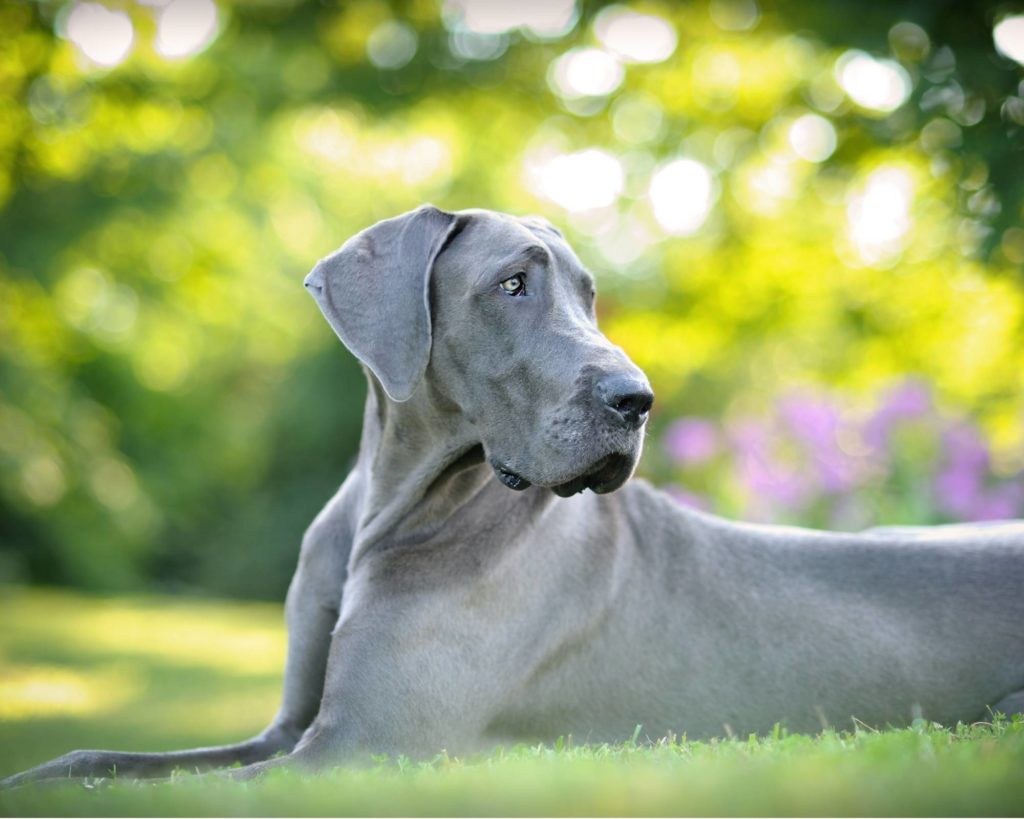
What are American Great Danes
Before we dive into the details here, it’s important for you to know something.
‘American’ is actually just…a label.
When it comes to Great Danes, there is only one actual type! The Great Dane!
Great Danes are giant breed dogs who can weigh between 115-195 lbs. There is a written standard for the breed, written by the Great Dane Club of America or the FCI (European club) that covers everything from their temperament to their size.
Some Great Danes are labeled as ‘American’ because they have more refined features. We will dig into this below in the history section!
The American Kennel Club (AKC)
The AKC is the main national breed club that recognizes and registers Great Dane dogs in the United States.
While there are other kennel clubs around the world, the AKC is among the most well-known and respected. Most dog owners know what the AKC is, but may not be aware of how it’s important.
Beware of U.S. Great Dane Breeders who register their dogs with the ‘CKC’. There are two CKC:
Continental Kennel Club – Not reputable. Any dog can be registered, low quality.
Canadian Kennel Club – Reputable Canadian registry for dogs born and bred in Canada
So, when people talk about ‘American Great Danes’ they are simply referring to the Great Danes that are registered with the AKC.
Just because a dog is “AKC registered”, doesn’t mean that it’s an ethically bred or well-bred dog! There are many poorly structured, aggressive, off-standard “AKC Registered” “full-blooded” Great Dane dogs.
Now that we’ve got that out of the way, let’s move on!
How Can Great Dane Breeders Ensure Healthy Puppies?
How Does Backyard Breeding Impact the way that a Dog Looks?
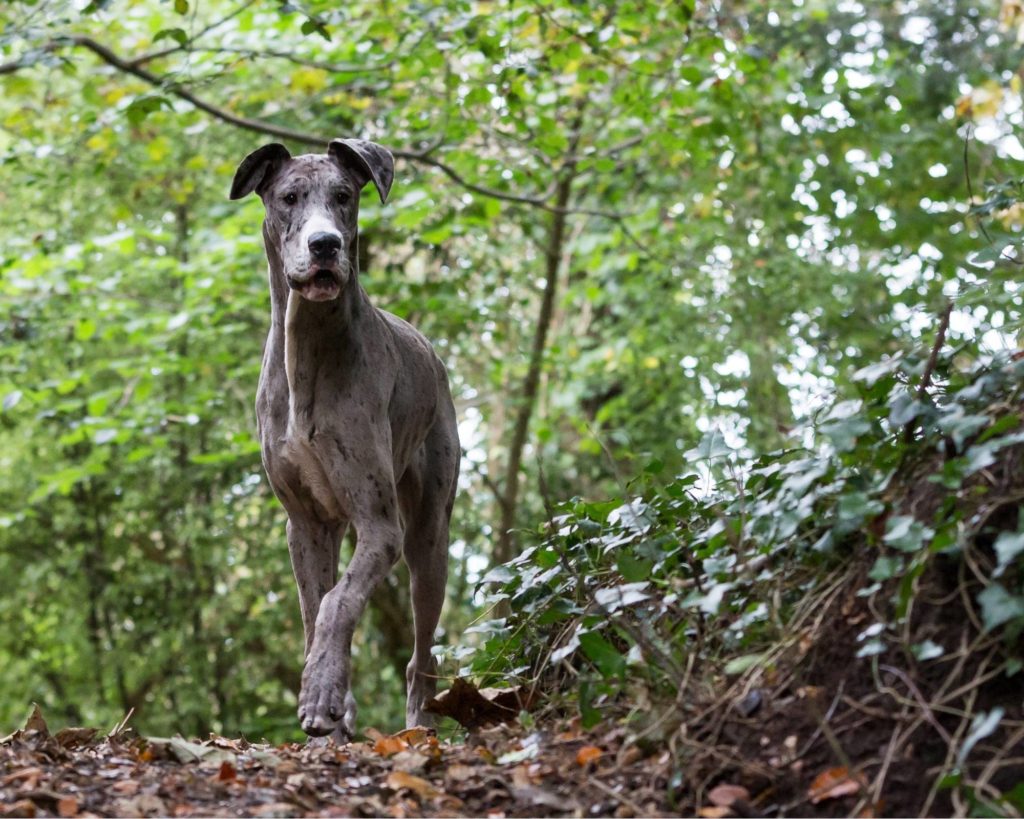
American Great Dane history
Great Danes are a popular giant dog breed that was originally bred to hunt wild boar! With popularity comes, well, problems.
Backyard breeders jumped at the chance to breed their AKC-registered Great Danes, without consideration for how genetics may affect the structure, health, and overall conformation of the puppies.
These careless breeding practices have shortened the lives of Great Danes and perpetuated devastating health issues.
Over time, many pet Great Danes were being seen with more refined features. Their appearance was noted as “greyhound-like”, as they had a smaller build and more dainty features than the “European” Great Danes.
For the most part, these dogs and the breeders they came from have not (and do not) participated in sanctioned AKC dog show events. So there are no checks and balances.
Generally, when people want a Great Dane, they want a HUGE DOG. So it’s not surprising that many dog owners, thinking all Danes in the U.S. look like greyhounds, flocked towards breeders that were producing the heavier, droopier, stockier “Euro” hyper-type (more on this below)!
What Does Euro Mean in Great Danes?
The Many Great Dane Spots, Colors, and Stripes
Miniature Great Danes: The Pocket Size Version
Off Color and Designer Great Danes
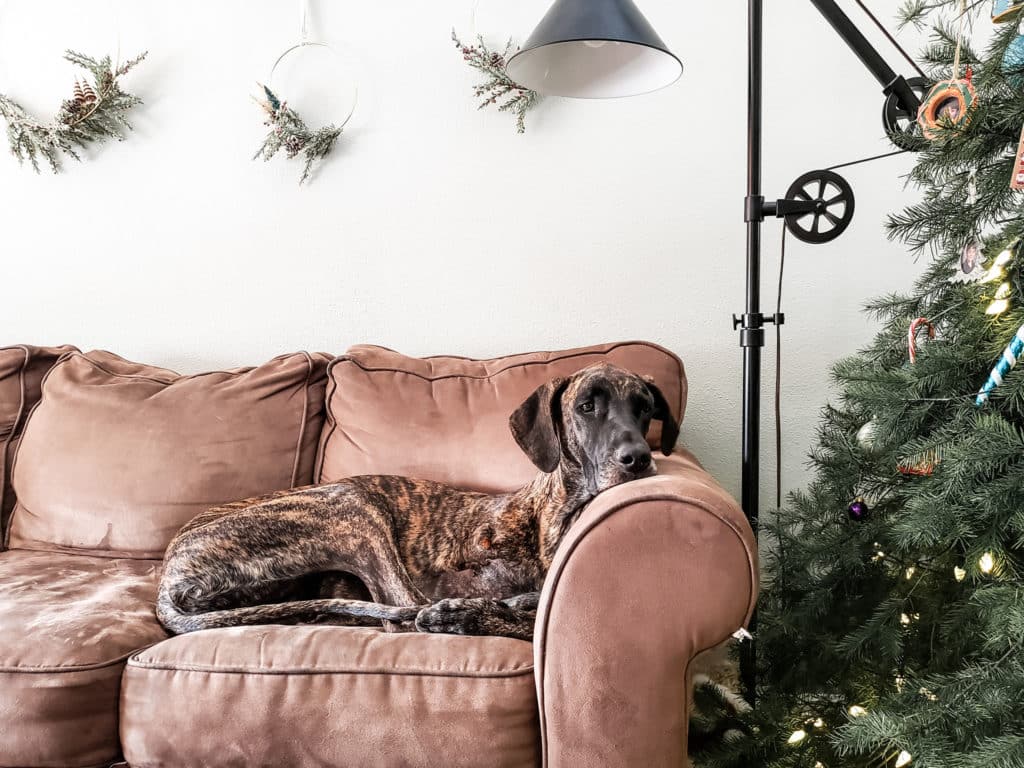
Great Danes in Dog Shows
Dog shows are an opportunity for breeders to prove that their dogs meet the written breed standard set by their respective breed club (in the case of Great Danes, it’s the Great Dane Club of America).
The Great Dane (even one labeled as ‘American’) is no different! In order for a Great Dane to be shown in an AKC dog show, it must first be registered with the AKC, and second, be of structure and stature to compete against other dogs that were carefully and thoughtfully bred.
Danes that are being shown in AKC events and winning actual titles in the conformation ring display the robust, correctly-built nature of well-bred Great Danes.
Dogs that are too refined, or that could be labeled as ‘American’, do not perform well. This should be an indication to breeders that they don’t have the correct genetics to pass on, however, backyard breeders do not care.
They don’t show their dogs, because if they did, their dogs would fail.
One Big Droopy Eyed Dog: Eyelid Ectropion in a Dog’s Eye
In other words, ‘American Great Danes’ are nothing more than a classic symptom of, you guessed it, American greed.
That’s not to say that every single dog deserves love, they do. It’s not their fault. It’s the fault of the breeders. Love the dog in front of you, please!
Here is a photo of the Great Dane, sketched by the GDCA in reference to what a well-built Great Dane should look like (bred in America). You’ll note that unlike the common perception of ‘American’ dogs, these dogs are huge, robust, strong, and muscular. Not refined, nor do they look like greyhounds!
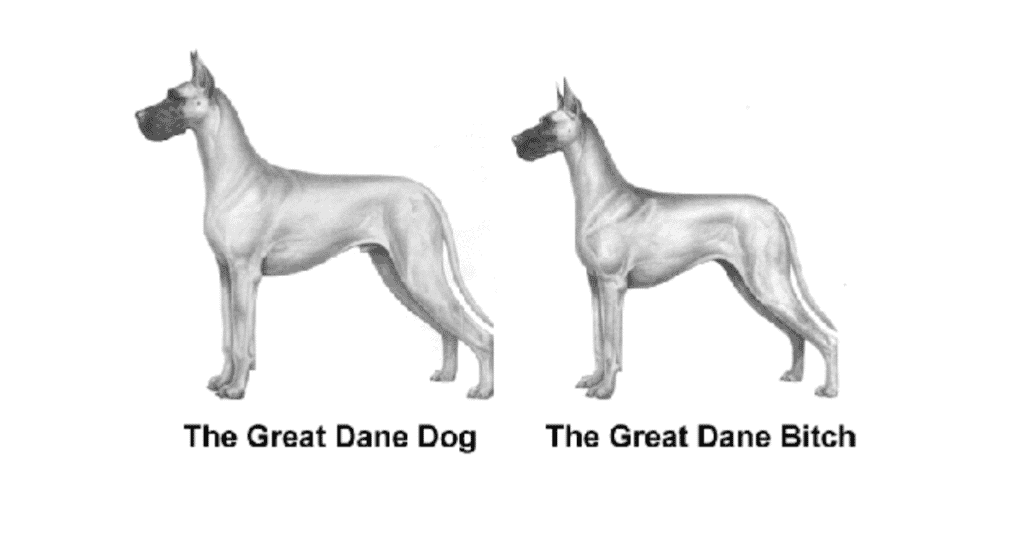
Traits of the American Great Dane
The American Great Dane may have:
- Ears that stick up or out
- A smaller build than other Great Danes
- A refined face with minimal lip
- Petite feet/paws
- Poor overall substance
- Minimal bone/small bones
- Roached back (also Greyhound-like)
- Poor angulation
- Lack of robust chest and hip development
As above, we love all Great Danes no matter what they look like or where they come from! Just because you don’t have a show dog doesn’t mean you don’t have an ideal pet for your life and home.
It’s important to keep in mind, however, that these ongoing deviations from the one Great Dane breed standard will affect the overall ‘look’ of Great Danes for years to come.
Breeders who intentionally breed for these traits should not be celebrated.
Is Embark a ‘Good Enough’ Health Test?
Choosing a Dog From a Show Breeder

American Great Dane size
Despite their more refined look, Great Danes that are labeled as ‘American’ are still giant breed dogs!
They have specific needs when it comes to their nutrition, exercise, and overall care.
We do not recommend purchasing an ‘American’ or Miniature’ Great Dane to save space in your home.
The practice of intentionally breeding smaller dogs is unethical and may result in health problems that can be expensive and heartbreaking to deal with.
If you’re looking for a more compact dog, there are plenty of options in smaller breeds! Please do your research before bringing home a new pet, especially a giant breed one!
White Great Danes, How do They Happen?
How to Find a Great Dane Breeder Near Me
Are American Great Danes healthier?
There is no scientific evidence to support the claim that American Great Danes are any healthier than other Great Danes. In fact, due to their often poor lineage, they may be more prone to health problems!
Miniature or ‘American’ Great Danes are still prone to:
- Wobblers
- Bloat
- DCM/Heart Disease
- Arthiritis
- Cancer
- Degenerative Myelopathy
- Hip dysplasia
and more!
Just because a dog is smaller does not mean it is healthier. In fact, many of the health problems listed above are common in small breeds as well!
The best way to ensure your Great Dane’s health is to purchase from a reputable breeder who health tests their dogs before breeding and focuses on the written breed standard.
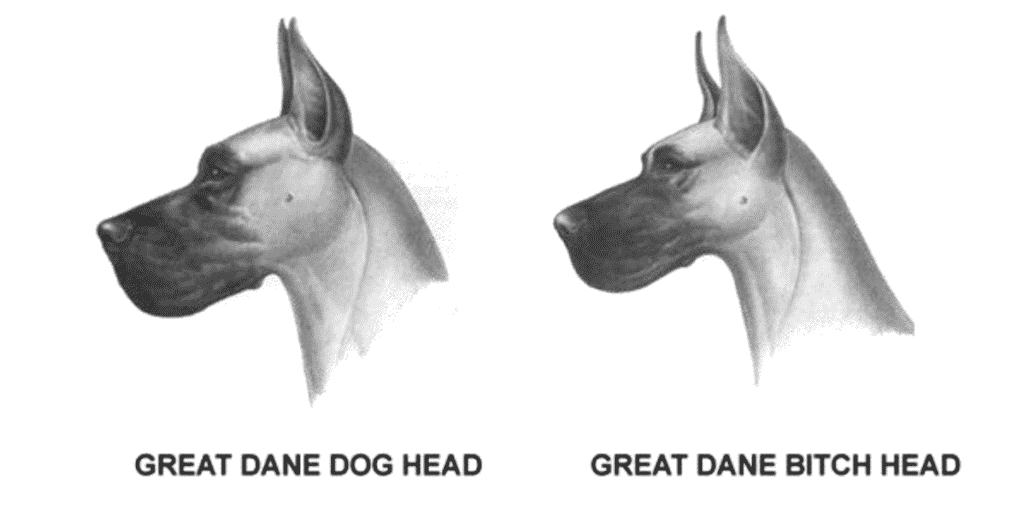
Do American Great Danes make good family pets?
We love Great Danes and believe they make excellent family pets!
Great Danes that are labeled as ‘American’ or ‘Miniature’ are often the product of poor breeding and may have health and temperament problems that can make them poor family pets.
So it’s important to be diligent in your search for a Great Dane Breeder! Great pets come from excellent breeders who are focused on health, longevity, and confident, stable temperaments.
Many ‘American’ Great Danes from backyard breeders are timid, fearful, snappy, unpredictable, and even aggressive. This is hardly the ideal dog for a family with small children!
If you’re looking for a Great Dane puppy, please do your research here. We’ve included some helpful resources below for finding an ethical breeder!
How Can Great Dane Breeders Ensure Healthy Puppies?
What Should a Great Dane Look Like?
What is Backyard Breeding, anyways?
What should I feed an American Great Dane?
All Great Danes are considered giant dogs, even ‘American Great Dane Dogs’.
They must be fed a large or giant formulation dog food, from a company that meets WSAVA standards and ethics.
We recommend Purina Pro Plan and Royal Canin, however Hills, Iam’s and Eukanuba also make appropriate foods.
Many boutique dog foods will use marketing to make you believe that their foods are healthier and of higher quality. It’s important to know the difference.
Secondary DCM, for example, is an issue where the dog’s heart fails. It often happens suddenly without warning and is seen in dogs that may be otherwise healthy, shiny, and active just moments before. Nutritional (secondary) DCM is caused by poorly formulated boutique dog foods.
Great Dane: Puppy vs. Adult Food
A Tasty Top: The Top 11 Foods to Feed a Great Dane
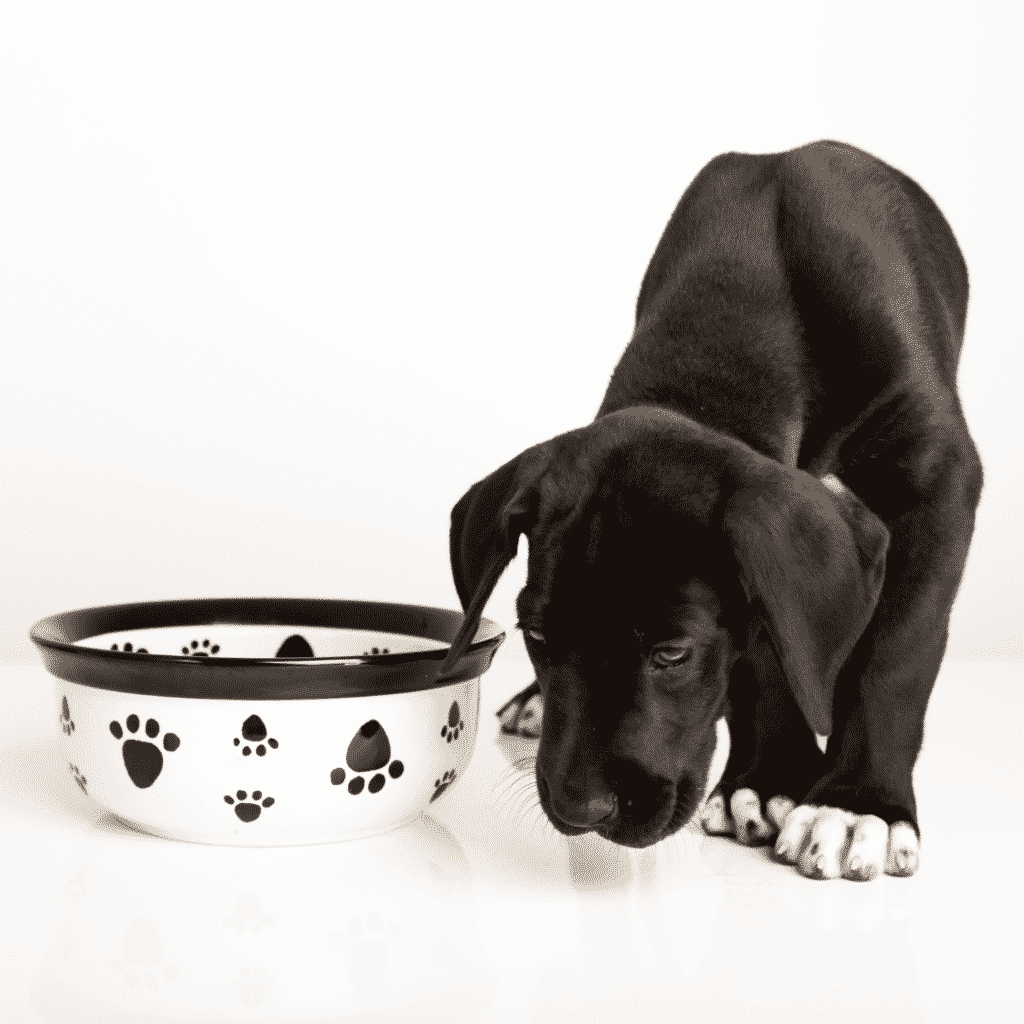
WHAT IS INGREDIENT SPLITTING IN DOG FOOD?
Learn about this dubious marketing practice that may be harming your dog! ↗
Should I breed my American Great Dane?
Breeding dogs is serious business, and with the sheer volume of dogs in rescue at the moment, it’s not something to take lightly.
We believe in and support ethical breeding practices, but we do NOT support the practice of breeding family pet dogs for fun and profit.
This means that if you want to be an ethical Great Dane breeder, you must:
- Health test your breeding stock; this means heart, hips, eyes, and thyroid OFA testing, no exceptions
- Focus on improving the health and temperament of the breed as a whole; are the dogs you are breeding truly passing on the best genetics?
- Ensure the lineage is free of bloat, wobblers, aggression, fear, cancer, and blood clotting disorders
- Only breed dogs that have excellent structure and angulation
- Be willing to ask for an evaluation and take honest feedback
- Avoid breeding spot to spot
- Only breed when you have an excellent home lined up for every puppy that could come from the litter
- Prepare to support those puppies not only through the tough first 8 weeks but for life
- Have a minimum of $4000 set aside to address emergent health issues
- Be willing to lose your female dog to birth complications
- Keep the puppies for a minimum of 8 weeks, and socialize them well (Puppy Culture)
- Spay and neuter all dogs that are not being bred
- Register the puppies with your respective kennel clubs (AKC or FCI), and uphold standards to prevent your puppy buyers from becoming backyard breeders
Health Risks in Great Danes that all Breeders Should Know About
What Should a Great Dane Look Like?
How Can I Make Sure I’m Not Backyard Breeding?
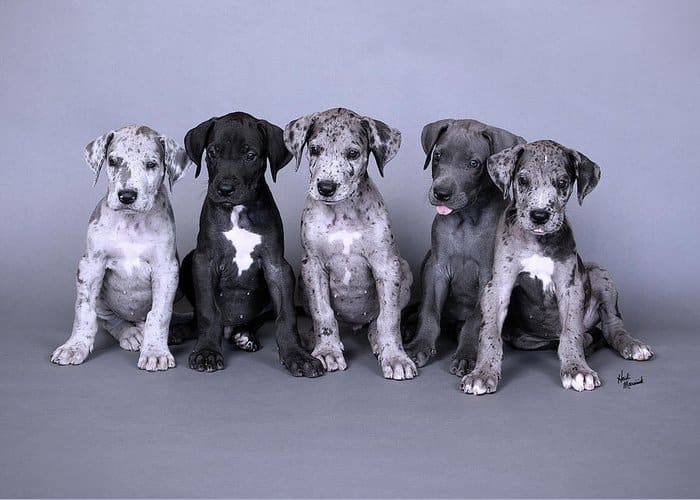
What is a European Great Dane?
A European Great Dane is a dog that was bred and born in Europe. Dogs who are bred to the European Great Dane written standard are nearly identical to those who are bred to the GDCA (American) written standard.
Which brings us to the ‘EURO’ Great Dane!
Is a ‘Euro’ Dane and a ‘European’ Dane the same thing?
No. A ‘Euro’ Dane is a Great Dane that has been bred with larger, droopier features. They are considered hyper-type Great Danes.
Many Great Dane Puppies that are sold with the ‘Euro’ label have very little, if any European lineage.
These dogs are often intentionally oversized, and their health and temperament can be questionable.
‘American’ and ‘Euro’ Great Danes are not actually a type or variation of Great Danes. Both are simply labels that indicate dogs who were bred out of standard.
A ‘European Great Dane’, on the other hand, is simply a Great Dane that was born in Europe!
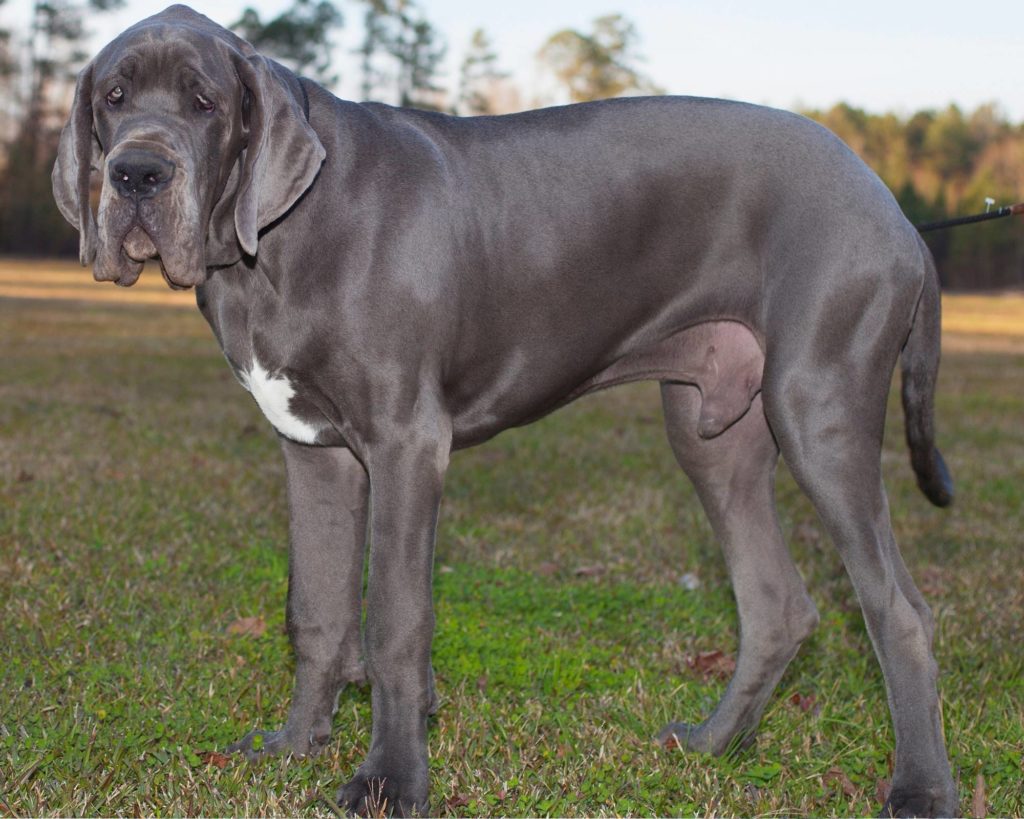
GDCA vs. FCI written standard
The Great Dane Club of America breed standard and the FCI (Europe) breed standard for Great Danes are nearly identical.
What does this mean? A Great Dane dog who is thoughtfully bred, from either Country, should be comparable when it comes to structure, stature, and temperament.
Are European Great Danes healthier?
It can depend on the breeder!
While it’s rare for ‘EURO’ Great Danes to be healthier by nature, dogs bred to the FCI standard from health-tested parents will be much more robust, long-lived dogs in general.
This is because the marketing terms ‘American’ and ‘Euro’ are hallmark traits of backyard breeding.
Breeders who use these terms are often not as concerned with the health, structure, or temperament of their Great Danes– they just want to produce a dog that will sell.
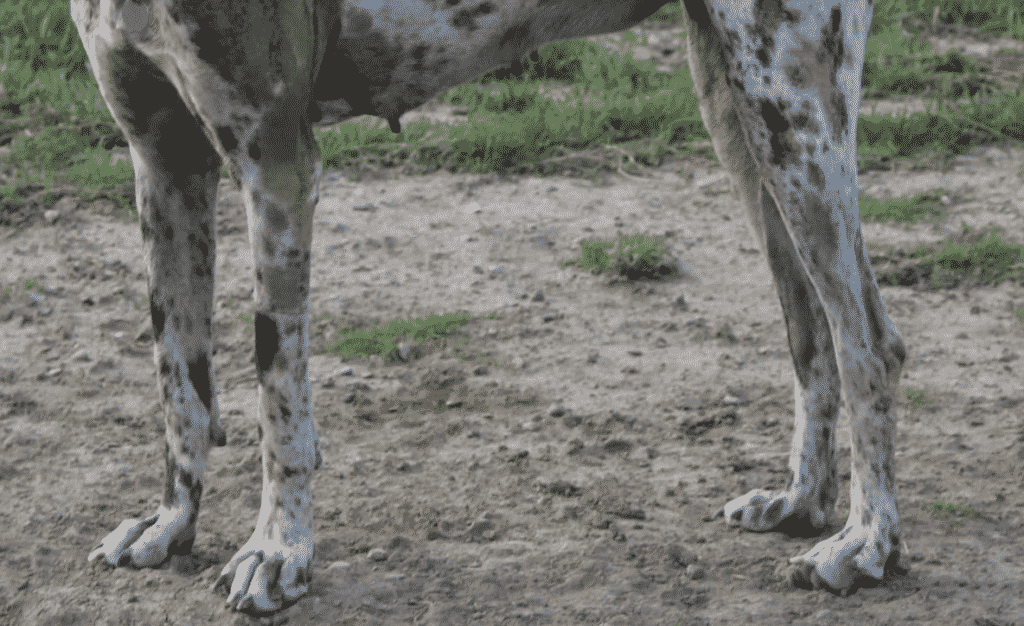
Why do ‘Euro’ Danes have droopy eyes?
This is a trait that is considered a significant fault in both the American and European written standards for Great Danes.
Droopy eyes are associated with:
- Entropion
- Ectropion
- Dry eye
- Glaucoma
- Cherry eye
These problems can be painful and expensive to treat. Some of them can even lead to blindness!
‘Euro’ Great Danes are often bred with this fault intentionally, as it is considered a ‘ stylish’ look.
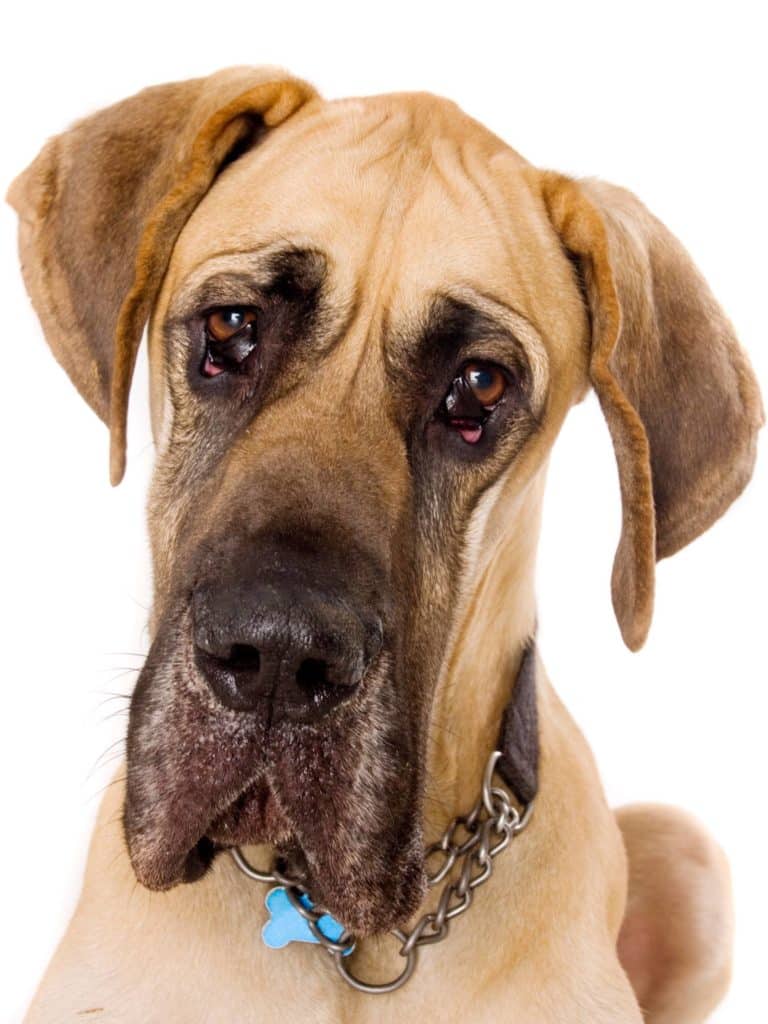
European Great Dane Temperament
The temperament of a well-bred European Great Dane should be no different than the temperament of a well-bred American Great Dane.
Both are gentle giants, who are patient and loving with children when they are bred from excellent parent dogs and socialized well. They are also intelligent, loyal, and low-maintenance dogs that make great family pets.
The only difference in temperament may be due to the fact that European Great Danes are often not as widely available in the United States, so they may be less familiar to American dog owners.
This can make them seem ‘exotic’ or ‘different’, when in reality, they are just the same wonderful breed of dog!
Bad Breeders: How To Spot Them
What Does Euro Mean in Great Danes?
Off Color and Designer Great Danes
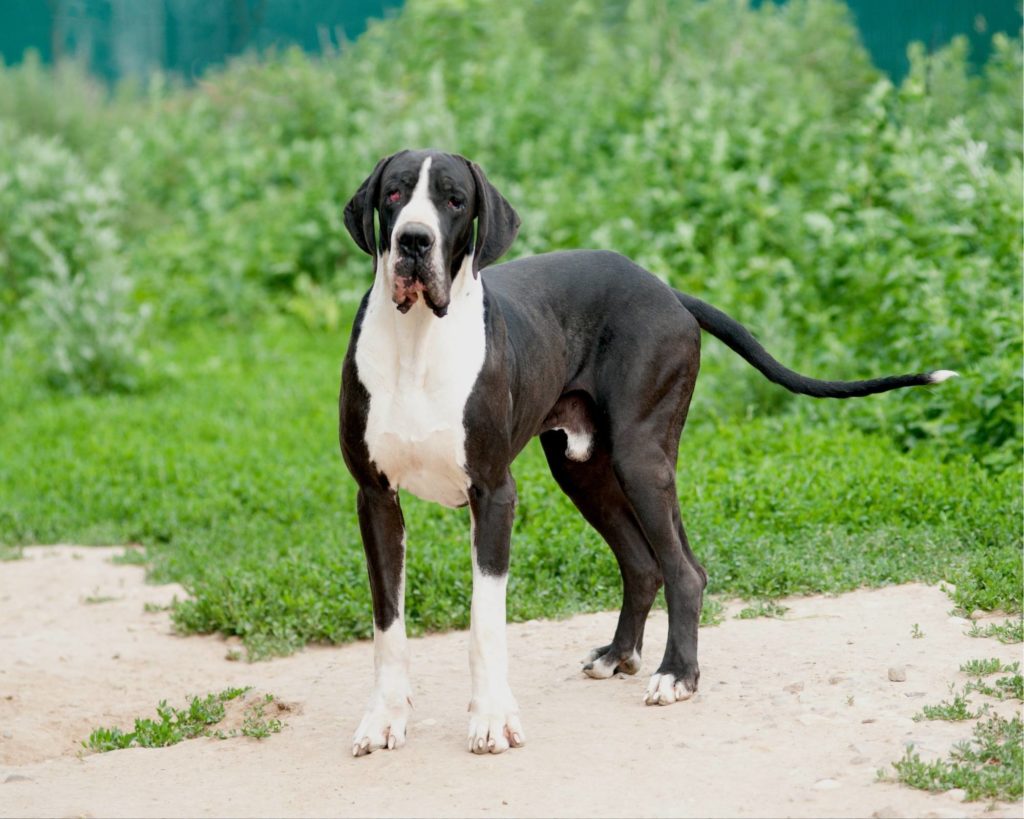
The Great Dane Breed Standard
The written standard for Great Danes in America and Europe is nearly identical!
A well-bred Great Dane from either Country will be comparable in terms of structure, stature, and temperament.
They will be friendly, courageous, confident, strong, lean, and well-muscled. They will have the angular brick-on-brick heads that Great Dane dogs are known for, with almond-shaped eyes (not droopy) and large, tight feet.
Good angulation means that they will move in a graceful, reaching way.
Well-bred Danes do not lumber around with their droopy heads hung down; they will glide, reach, and move forward as if they are weightless.
READ THE GREAT DANE BREED STANDARD HERE

American vs. European Great Danes
The written Great Dane breed standard in both countries indicates that Great Danes should:
- Have excellent front and rear angulation (for drive, reach, movement, and to lower the risk of orthopedic damage)
- Have robust muscle and bone
- Be lean, muscular, and graceful, not be stocky or refined
- Have nice tight almond-shaped eyes free of droop, with no haw showing
- Be friendly and courageous
While there may be some slight variations in appearance between them, overall, American and European Great Danes are very similar!
In other words, there is very little difference between American and European Great Danes, other than where they were born!
Both are gentle giants that make great family pets.
Here is a European Great Dane photo, from an ethical European breeder:
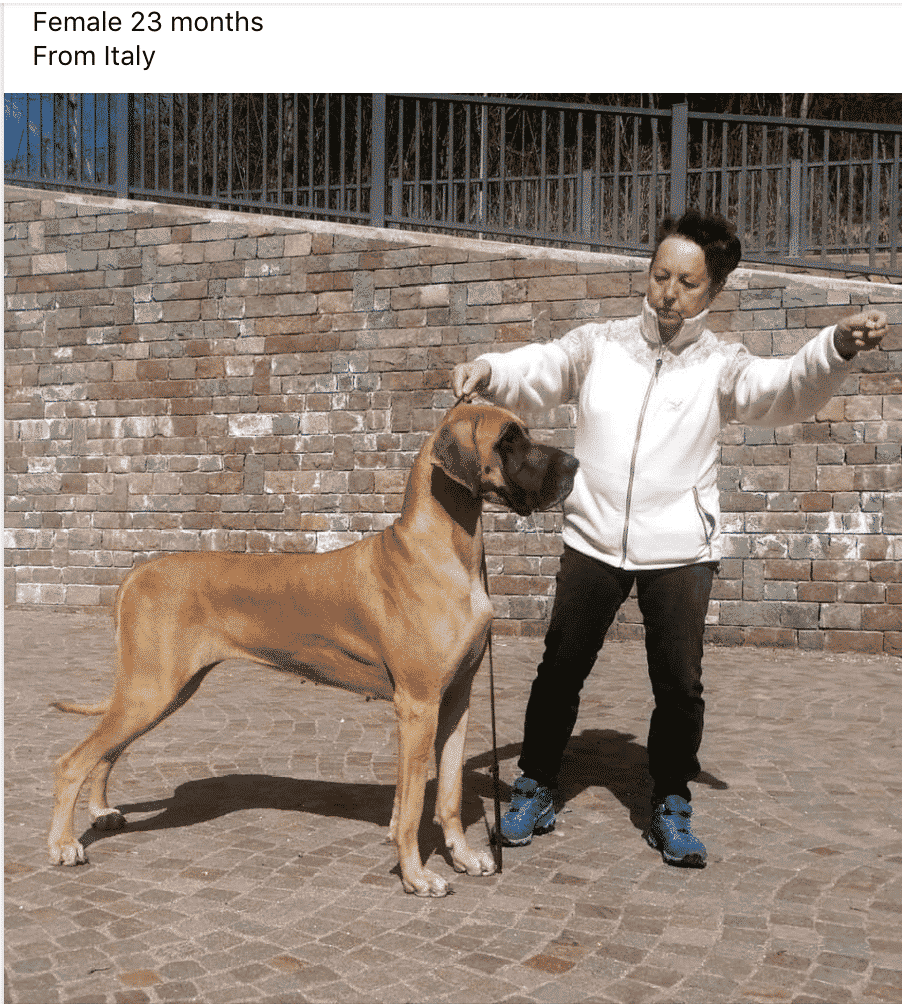
American and European Danes are…identical.
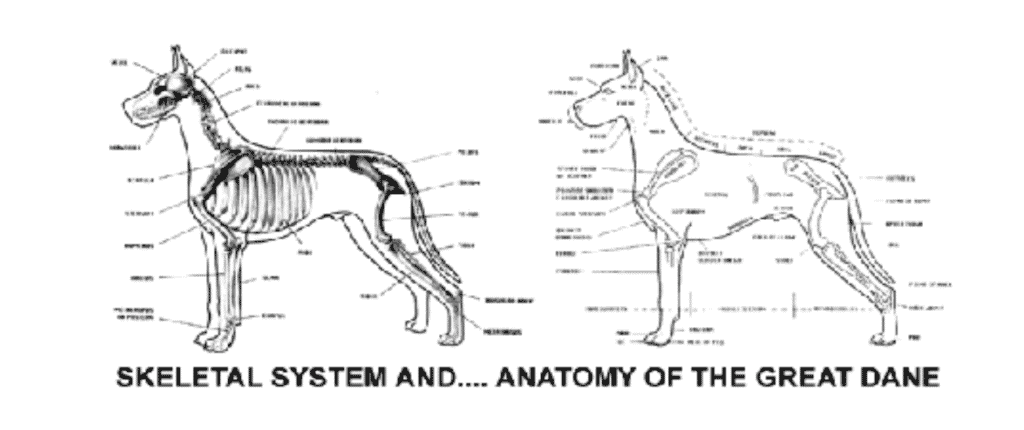
Where did Great Danes come from?
Great Danes originated in Germany! All Great Danes have European lineage, decades down the line, as a result.
The first recorded appearance of a dog that resembled a Great Dane was in Germany in the 16th century.
These dogs were known as ‘Boar Hounds’, and they were used for hunting wild boar.
While there are many different theories about how the Boar Hounds came to be, it is certain that they were bred from a mix of different hunting dogs, including the Irish Wolfhound, the English Mastiff, and the Greyhound.
The Great Dane we know and love today began to take shape in the 19th century.
Great Danes were originally bred to be large and imposing dogs; however, over time, breeders began to focus on developing the dog’s gentle and loving personality.
Today, Great Danes are still bred in Germany; however, they are also popular all over the world, including in the United States!
Great Danes are one of America’s favorite giant dog breeds!
Read about the world’s tallest Great Dane!

What is a ‘Well-Bred’ Great Dane?
A “well-bred” Great Dane is a dog that was bred ethically, thoughtfully, and carefully for health, structure, and temperament.
This means that the breeder:
- Has a robust pedigree that has been proven in AKC or FCI sanctioned events for conformation (dog shows), obedience (Canine Good Citizen, for example), sports (scent, dock diving, etc.), or work (therapy, search and rescue).
- Carefully chose both parents
- Can prove that the pedigree is free of bloat, DCM/heart disease, blood clotting disorders, genetic aggression/fear/shyness, cancer, and wobblers (all genetic and all early killers of Great Danes)
- Obtained a CHIC number for both parents, indicating that both were tested for hips, heart, eyes, and thyroid (check your breeder’s attention to detail here! Search the OFA Database where health testing results are registered. Is your breeder not listed or only did a few tests? Congrats, you’ve found a backyard breeder!)
- Keeps the puppies until 8-12 weeks of age, with no exceptions
- Will rarely, if ever approve a buyer to purchase multiples at once
- Uses puppy culture to socialize the puppies
- Supports the buyers for life
- Does not sell MLM pet foods or supplements to puppy buyers as part of a contractual requirement
- Maintains the dogs they own by caring for them, socializing them, and training them
- Participates in their breed clubs events and discussions
- Does not claim to sell “American Danes” or “Euro Danes”
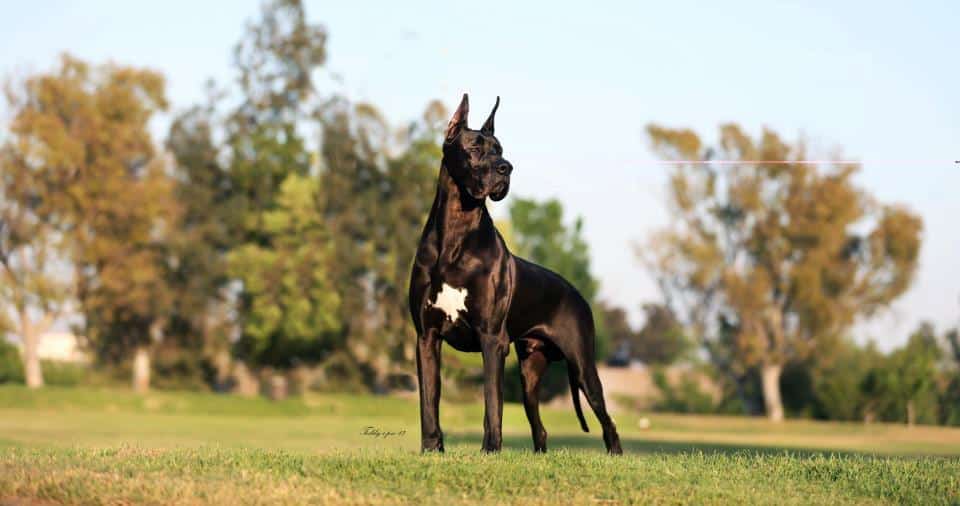
How to Find a Great Dane Breeder?
You will not find a well-bred or ethically bred Dane puppy from a:
- Pet store
- Craigslist
- Parking lot
- Puppy broker
- Online website
- Social media (with rare exception)
- Google search (with rare exception)
What is the Great Dane Breeder Scam?
Breed scams are RAMPANT. Many fake breeders are out there with cute puppy photos, trying to get you to place a deposit so they can “ship” you a puppy.
These people are scammers and have no puppy to sell you. Know the signs. Thousands of people each year fall for this scam and once the money is gone, it’s gone.
Scam Breeders: What to Look For
Should I Choose a Breeder or Rescue?
Choosing a Dog From a Show Breeder
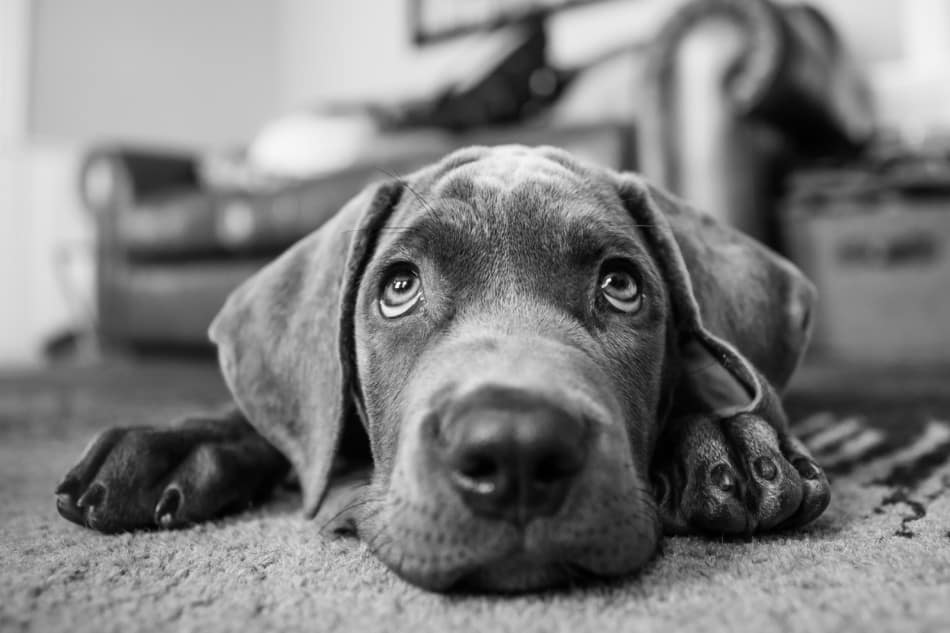
Where to find an ethically bred Great Dane Puppy
The only place to find an ethically and well-bred puppy is by starting your search with your local breed club.
You can search for a Great Dane breeder in the U.S. here! Note that many of these breeders have pretty terrible websites.
That means they are spending more time raising puppies than they are marketing themselves. This is an important distinction.
Reach out and ask questions! If they don’t have a litter available, they may know up-and-coming breeders who do.
What should I ask my Great Dane Breeder?
It is very rude to send emails to breeders with a list of questions that you want them to answer.
Instead, begin your communication with some information about you and your family, including your experience with Great Danes and why you are looking to purchase an ethically bred puppy.
Once the conversation is rolling, you can ask questions to determine if you are the right fit!
Many pet owners find, in speaking with a well-established and reputable Great Dane breeder, that they aren’t a good fit, and this is ok!
It’s better that you make the right decision before you bring the puppy home, rather than making a mistake and realizing you have to re-home your dog when they become too big for you to handle.
The relationship you have with this breeder will be for the life of the puppy, so it’s important that you and the breeder share the same values.

You can then ask the breeder, as part of the conversation:
Can I see your dog’s OFA/CHIC health testing information? If you don’t have heart, hips, eyes, and thyroid results for both parents, why not?
Can you share information with me about your pedigree, including titles?
Why did you pair these two parents?
If I get a puppy from you, what can I expect my dog’s temperament to be like?
Is a Great Dane right for my family?
How many litters do you breed each year, and why?
How do you socialize your puppies?
Where and how are the puppies raised?
What kennel club registration do your puppies have?
What type of food do you recommend I feed my puppy, and why?
Do you crop ears, or can you recommend a cropping veterinarian should I choose this procedure for my Great Dane?
What type of contract do you require for me to purchase a puppy from you?
Can I show or title a puppy I buy from you?
What is your policy on spaying and neutering?
How Does Early Spay Affect Great Danes?
Great Dane Puppy Food: the best list!
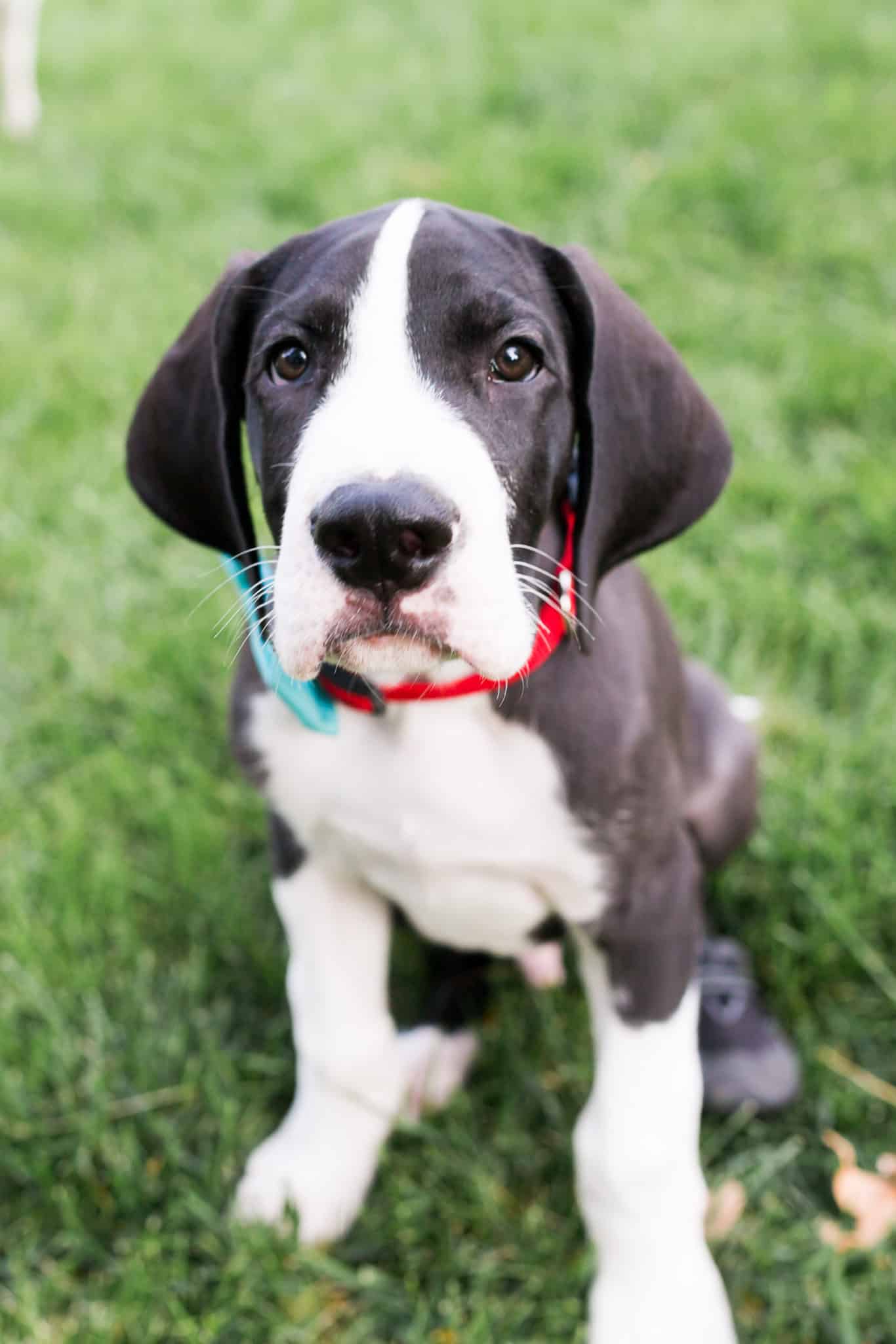
What should I know about raising a Great Dane puppy?
Great Danes are giant dogs, which means they have some special considerations. It does not matter if they have been labeled as an “American Dane”, “Euro”, or are a European Great Dane.
For example, Great Danes must be fed a high-quality diet. Puppies are prone to a number of painful growth disorders, such as knuckling, that can cause permanent deformities if they are fed the wrong food.
They are also susceptible to hip dysplasia and other joint problems, so it is important to keep them at a healthy weight. This means that they should be kept lean and muscular!
Great Danes are often genetically susceptible to bloat, wobblers, gut health issues, and DCM.
Read about these issues here, so you know what can be done to prevent them!
How to Potty Train a Great Dane Puppy
The Best Crates for Great Danes – Updated List
Is the Great Dane right for you?
Great Danes are wonderful pets for those who are prepared to care for them properly.
They require a high-quality diet, plenty of exercise, and regular vet checkups.
But if you’re up for the challenge, you’ll be rewarded with a loyal, loving companion!
Here are some questions to ask yourself, before getting a Great Dane:
Am I prepared to feed my dog a high-quality diet, and in doing so, understand what those diets actually are and why they are important?
Can I deal with slobber, water drips, heat cycles, smegma, huge hairy balls, slime, and giant farts?
How do I feel about having a dog in my home that can take up an entire couch, may not fit in my car, won’t be able to travel on an airplane, and might scare the neighbors, children, and other dogs just because of its size?
Am I prepared to exercise my dog regularly, preferably off-leash with training (off-leash exercise is ideal for Great Danes!)?
Do I have a huge pooper scooper, and can I handle giant piles of mushy, slimy poop if the situation arises?
Have I read up on the difference between a dog that is a true guard dog, and a dog that is simply fearful, timid, and unstable?
Do I have the time and patience to thoroughly train a giant puppy, who may outweigh me in a matter of months?
Am I aware that many breeders of Great Danes are operating unethically, and do I know how to spot them?
Are there other pets in my home that would be ok with the addition of a huge, friendly, bouncy dog?
Have I read up on bloat, DCM, wobblers, and knuckling?
Did I teach my children to respect dogs’ space, and did I give them tools and information on how to safely interact with puppies and dogs?
Am I ok with responsibly keeping a giant dog intact until 18-24 months of age (best for orthopedic development), even when people are ‘grossed out’ or shocked by it?
Will I put time and effort into understanding dog body language, so that my Great Dane never intimidates, hovers, or is rude to people or dogs?
Am I willing to continue our obedience training journey, and utilize a modern, balanced training approach with a lot of positive reinforcement?
Do I have experience with extra-large dogs?
Am I aware that Great Danes think they are lap dogs, and thus, am I ok with being crushed on the couch?
Do I understand that this breed has special health considerations, and may suffer from things such as bloat or hip dysplasia?
Are my other family members ok with this decision?
Do I have the financial resources to care for a giant dog?
Am I willing to be patient and wait for the right Great Dane puppy, if it means choosing to support only ethical breeders?
Can I invest in XL orthopedic dog beds and pet insurance?
Will I keep the nails short, brush my dog’s teeth, get my dog vaccinated, use parasite preventatives, clean my dog’s ears, and talk to my veterinarian?
Do I really need a Great Dane, or are other large dog breeds a better fit for my lifestyle?
READ MORE:
Blue Great Danes- Facts, Photos, and Care
The Top 5 Adorable Facts About Brindle Great Dane Dogs
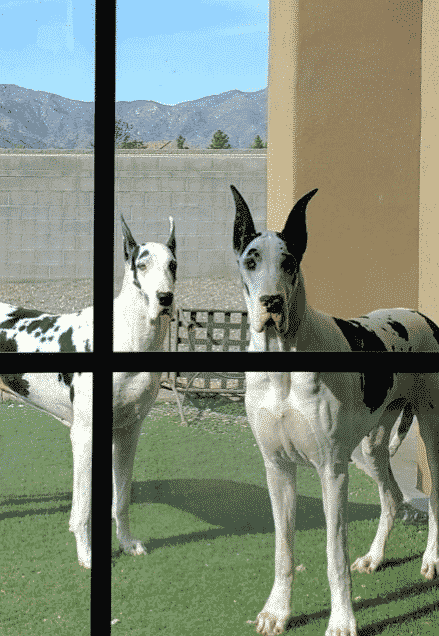
JOIN OUR COMMUNITY
Do you like modern positive+balanced off-leash dog training, science-based information, life with Danes, educated ownership and chatting with other like-minded people?
Join our growing Facebook group!

